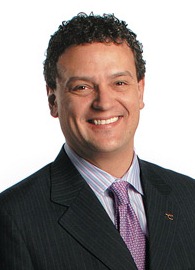
OTTAWA – The “tsunami of traffic” resulting from very high levels of social media over wireless devices and the connectivity of an increasingly large number of those devices is forcing mobile operators to deal with growing congestion.
This was one of the key messages from Eros Spadotto, executive vice-president of technology and operations at Telus during a keynote presentation to the Institute of Electrical and Electronics Engineers (IEEE) International Conference on Communications on Tuesday in Ottawa. He said the possible connection of 20 to 200 billion devices to the Internet using wireless networks could create headaches for wireless network operators. In addition, carriers are having to consider the fact that there is no such thing as a “busy time” on the network.

“The entire network is busy all the time and it forces us to start thinking about payload and signaling, It’s one of the things that we really have to get our heads wrapped around is there are big challenges in those two areas,” said Spadotto (right), adding that the congestion isn‘t coming from the amount of traffic, or payload as he described it. Rather it’s coming from signaling – when devices communicate with the network.
“The reality is that while our megabytes of traffic is increasing, the signaling from these devices is greatly overwhelming that. In fact, we can look at a period of time where our growth has been 100% year over year on payload, on how many megabytes, but our signaling has grown 2,700%,” he explained.
Part of the problem, Spadotto noted, comes from the applications makers who forget that these devices have to communicate with the network. “They have ignored the fact that these devices actually talk to the network… and all that consumes signaling and causes networks to congest,” he said.

A solution to this congestion issue to get more spectrum in the hands of operators. Canada is preparing to do its part through the 700 MHz auction slated for early next year and the 2500 MHz auction the government hopes to run a year after that.
It’s not just about getting more spectrum, said Spadotto, it’s about making it useable by the operators so they can build faster networks to deal with the onslaught of richer, bandwidth intensive applications being used over increasingly sophisticated mobile devices.
“More importantly, we have to be able to package that spectrum together. One of the biggest challenges we have is that we don’t have many virgin blocks of spectrum left in the world and in fact there are not many adjacent blocks of spectrum in the world,” he said. “So one of the challenges we have as an industry is the ability to seam these various pieces of spectrum together that may be dispersed over many Megahertz, many Gigahertz, into a service. That’s the problem we need to solve.”



